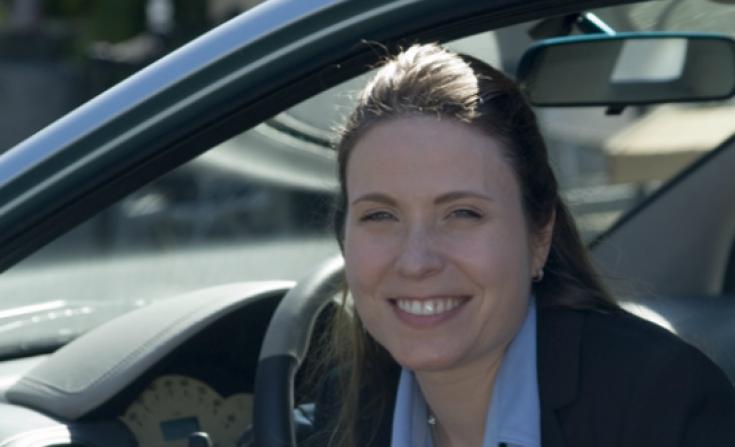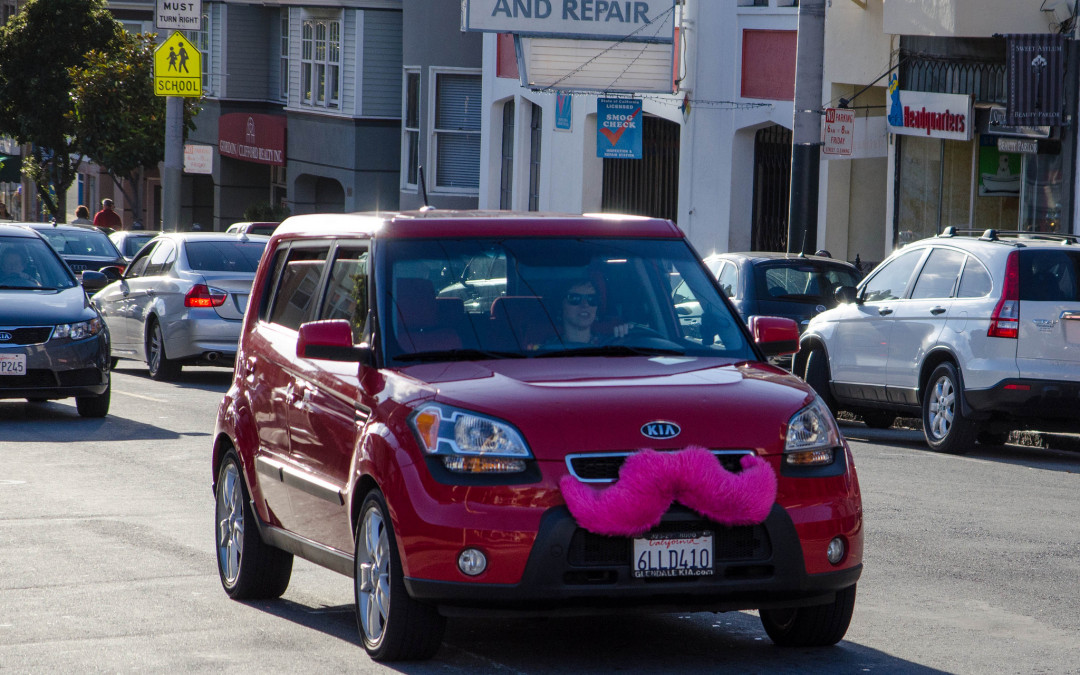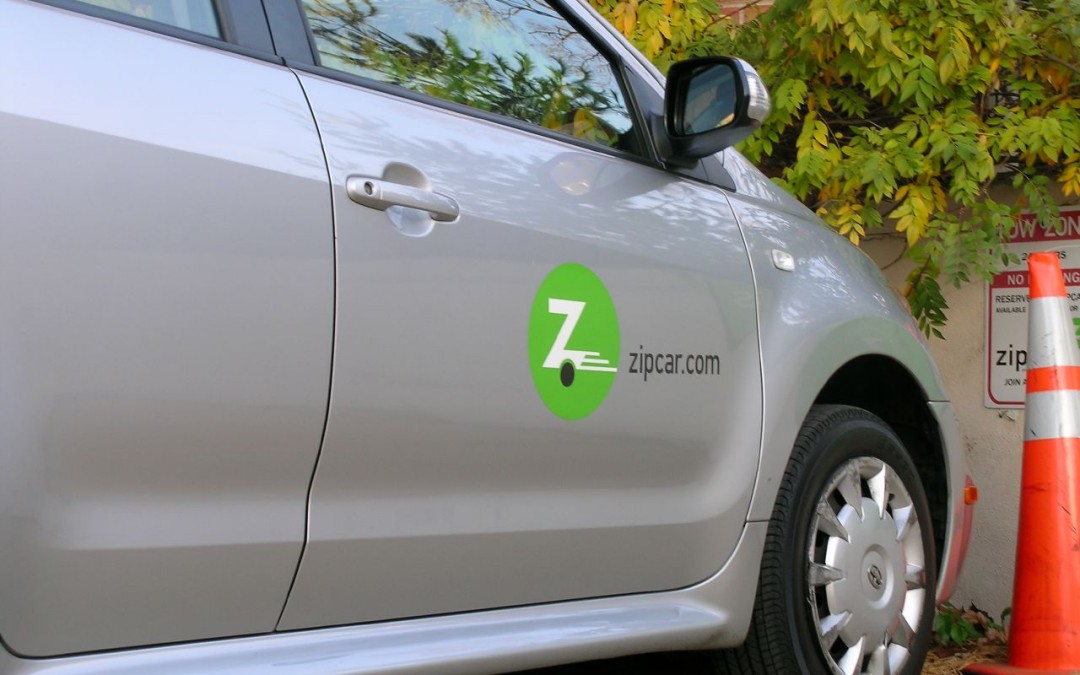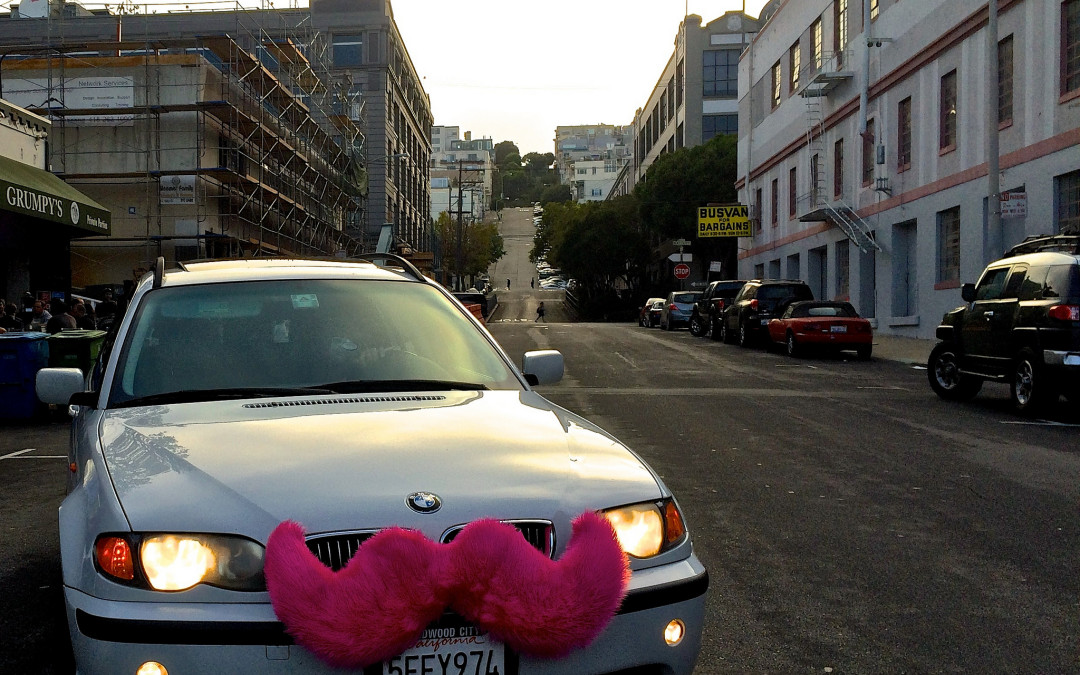
by mattchristensen00 | Oct 14, 2014 |
By Matthias Krause If you’ve attempted to dive deep into the topic of car sharing, chances are you’ve come across Susan Shaheen, or at least some of her studies. About 18 years ago she fell in love with the concept, even though she’d probably never put it that way. The idea of car sharing “resonated” with her, she said, as a Ph.D. student at the University of California at Davis looking for a dissertation topic. She saw a lecture by Michael Glotz-Richter, a German Marshall Fund Fellow from Bremen. She was fascinated by behavioral effects of people joining car sharing, and the resulting benefits for the environment, she recalled from her office at the University of California at Berkeley, home of the Institute of Transportation Studies, where she serves as a co-director of the Transportation Sustainability Research Center. “He essentially showed that 44 percent or 45 percent of vehicle kilometers traveled were declining due to the use of car sharing, and people were selling their cars or not buying cars, somewhere around 7 to 15 I think the numbers were,” Shaheen said. The reductions in energy use and CO2 emissions were notable, achieved by people changing their behavior. “I had been working on this idea of the station car that goes to and from the transit station. Is there a way that those vehicles could be shared and we could bring the concept of car sharing to the U.S.? And I was really deeply interested, and studying this by actually demonstrating it, putting a real project on the ground and seeing if we could get people to behave differently, and...

by mattchristensen00 | Sep 12, 2014 |
By Caroline Said California regulators told Uber, Lyft and Sidecar that their new carpool options are a no-go because they violate a state law against charging different fares to passengers in a hired vehicle. The companies and transit experts condemned the move as squashing an environmentally friendly option. But it turns out that the California Public Utilities Commission, which sent warning letters to the companies last week, merely wants to spur them to get legislators to overhaul the law. “Our hands are tied,” said Marzia Zafar, PUC director of policy and planning. “We wanted to make the letter public to let the (ride companies) and the Legislature know that there is this code. It may be outdated; it may not. The Legislature will have to review it and make a judgment call.” Current law “strictly prohibits a charter party carrier from charging passengers on an individual-fare basis,” said the letters, available at http://tinyurl.com/lxmvh8n. “The commission lacks the flexibility to allow a transportation service that is contrary to the statute.” That law was written to prevent limo drivers from poaching passengers from shared vans like Super Shuttle, Zafar said. “Maybe this is an opportune time to review the code,” she said. Sources said that Uber is preparing a detailed explanation of why it believes it already complies with the law. The company was typically provocative in a prepared response. “We thought we had seen it all, and then the California PUC decided they would try to shut down app-based carpooling,” Uber wrote. “The only conclusion we can come to is that the PUC doesn’t like technology, environmental progress, or anything...

by mattchristensen00 | Sep 11, 2014 |
Urban Mobility is Hitting its Stride Few people know more about urban mobility than Susan Shaheen. The Cal-Berkeley professor of transportation engineering is one of the nation’s preeminent researchers of bike sharing, car sharing, and smart parking. Real Business caught up with Shaheen at ITS to chat about how modern cities are evolving. How has urban mobility come along over the past decade? Shaheen: We’re moving into an era of smart cities where [planners] are thinking about how to move people more efficiently throughout cities through classic public transit, like buses and rail, but also other forms of mobility that are new, like bike sharing and car sharing. There’s a growing emphasis on quality of life, and we’re trying to figure out how people can live densely but also increase their life quality. And we’re also seeing people gravitating more toward urban living. The smartphone has been a player in all of this, as has the economic recession of 2008 an 2009. How are millennials impacting this change? Shaheen: Auto sales are not as high among younger adults and millennials as we’d seen previously. There’s a desire among millennial populations to multitask. They want to be connected all the time and they’re not as interested in driving. Being connected also means riding in a public transit vehicle. So we’re seeing people wanting an urban lifestyle and trying to figure out how to make that work, even with families. To read the entire article, click...

by mattchristensen00 | Sep 2, 2014 |
By Caroline Said For San Francisco riders, on-demand services Uber, Lyft and Sidecar consistently arrive much more quickly than taxis, according to a new study from UC Berkeley researchers. To access the full article, click...

by mattchristensen00 | Aug 29, 2014 |
By Eric Jaffe It’s become a given that ride services like Uber et al are disrupting city mobility, but for all the digital ink spilled over that trend, we don’t have much data on what exactly the disruption looks like. (That is, other than the occasionallyquestionable data the services supply themselves.) So it’s important for outside observers to pull the veil back a bit, and a research team at UC-Berkeley led by Lisa Rayle has done just that with a new working paper on “ridesourcing” services, as they’re calling Uber, Lyft, Sidecar, and friends. The study focused on ride-service users in San Francisco. Some were intercepted immediately after a ride, some discussed a ride they’d taken in the past couple weeks. The researchers compared their findings with two 2013 data sets on taxi ridership—one a survey conducted by the San Francisco Municipal Transportation Agency, and the other a trip log from a local taxi company. The report is wide-ranging and worth a full read, but here are some of the highlights. Ridesource users tended to be 25 to 34 years old (with very few over 45) and a bit wealthier than the general population. The services replaced transit trips at times (24 percent of users said their alternative would have been to take the bus) and added traffic to the network (8 percent said they wouldn’t have made the trip at all). At the same time, 40 percent of users said they drove less than before, and many trips began near a rail (28 percent) or bus (85 percent) stop, suggesting a possible transit complement. Read the entire article...






